Shotguns are making a mighty big comeback.
Why?
Guns and ammo are getting better for one. Not to mention, they are just cool weapons.
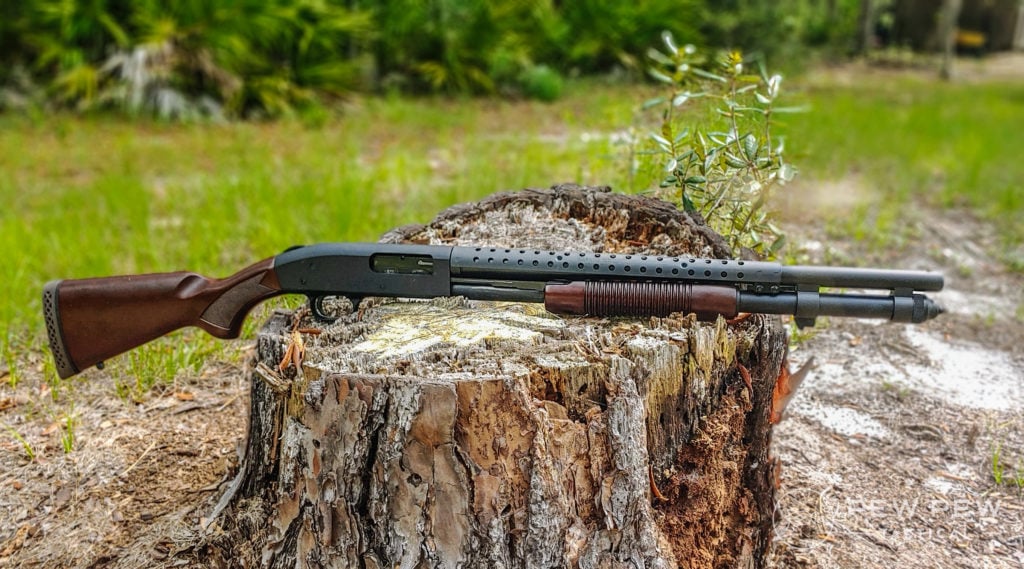
These firearms are some of my all-time favorite defensive tools.
With a variety of loads, though, it can be confusing if you’re just starting out. But I’m here to help!
I’ve spent a lot of time and money buying shotgun ammo and experimenting with it. Someone should benefit from it!
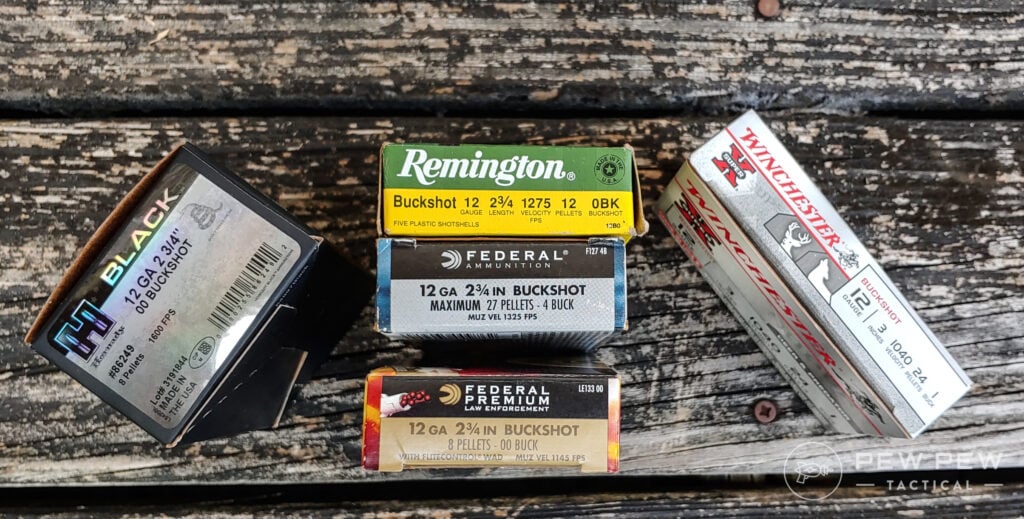
I’m a huge shotgun nerd; so with many new shotgunners out there, I wanted to teach you guys about buckshot.
In this article, we’re going to cover what buckshot is, why you should use it, and what loads are most effective.
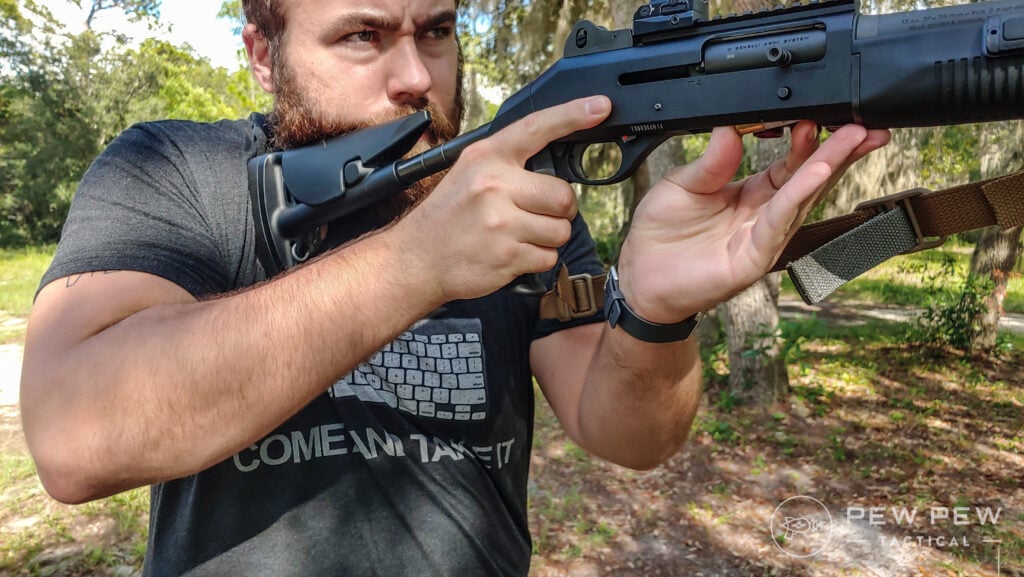
Ultimately, we’re going to help you save some money and time!
So, read on!
Table of Contents
Loading…
We’re Talking 12s
While a multitude of shotgun calibers exist, only one has the market support worth discussing.
Meet the 12-gauge.
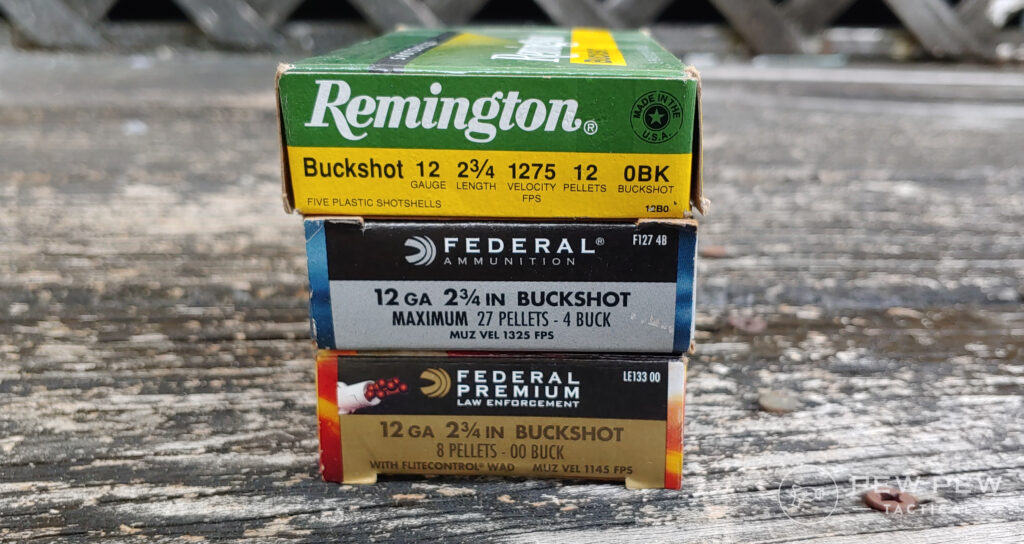
Now, we’re not turning our noses up at the 20-gauge shotgun. It’s a good option but there aren’t nearly as many buckshot options for 20-gauge.
You can certainly use the information here to choose a 20-gauge load.
Prices accurate at time of writing
Prices accurate at time of writing
-
25% off all OAKLEY products - OAKLEY25
Copied! Visit Merchant
But, word of warning, you may find yourself frustrated at the lack of loads designed for defensive and tactical applications.
So, with that said, we are coming at this from a 12-gauge perspective since it’s the most common caliber for defensive/tactical use.
Why Buckshot?
For close-range use, buckshot is an extremely powerful load that delivers a massive amount of lead per trigger pull.
Buckshot to the torso generates the highest percentage of one-shot stops at close range, according to Greg “GorillaFritz” Ellifritz’s research.
In a shotgun, buckshot is a powerhouse of a round, delivering several projectiles with every round fired. This means multiple projectiles strike the target, resulting in a terrifying amount of damage to a target.
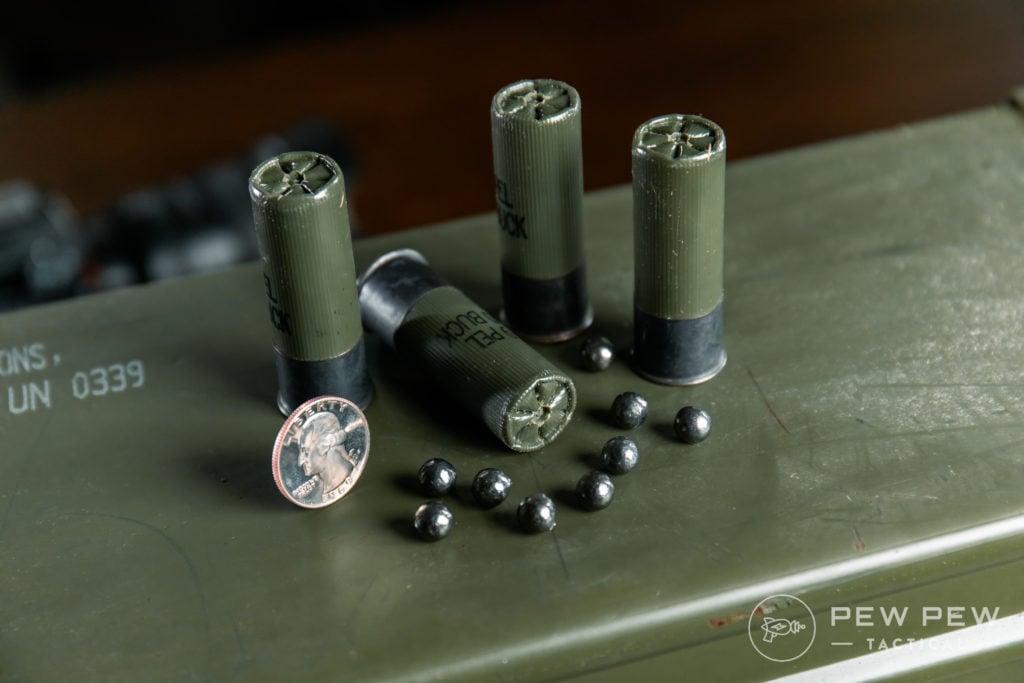
For defensive purposes, the most effective way to stop a threat is proper shot placement.
When a load of buckshot hits a threat, the pellets themselves begin to spread. This causes tons of damage and increases your chances of striking a vital portion of the body.
Even if every pellet misses something vital, the damage done creates massive blood loss.
Blood loss is the second most effective means to stop a threat.
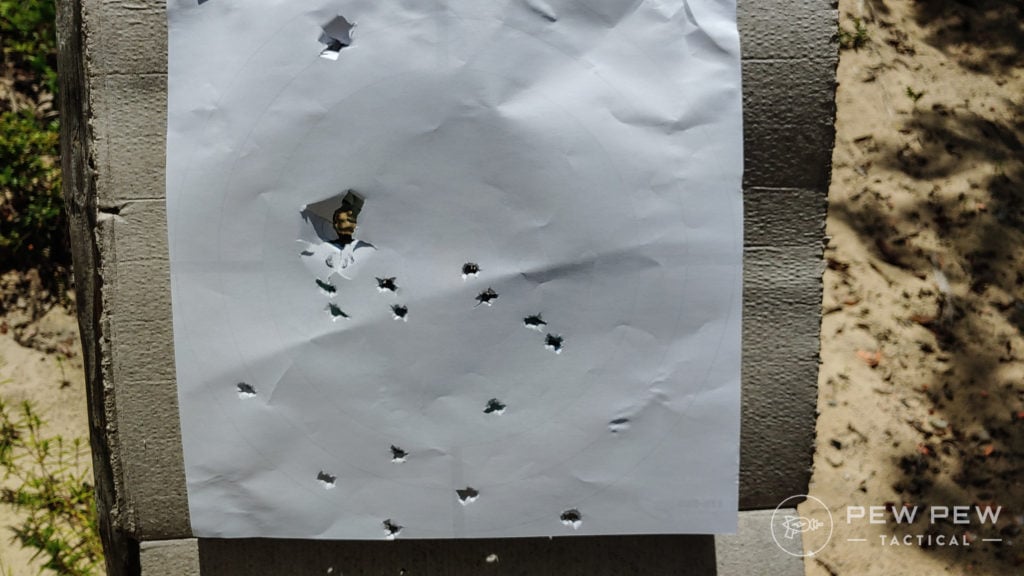
Despite the rumors, buckshot is not a net of death. You still have to aim.
The good news is if you flinch or stutter and your shot goes a few inches low, you are still more likely to strike something vital than a handgun or rifle round.
Why Not Slugs?
Slugs are great!
They are extremely powerful and are very capable of defensive use. Slugs can even deliver a massive amount of power to a threat.
However, if you miss, a slug is going to carry more energy as it travels through both exterior and interior walls.
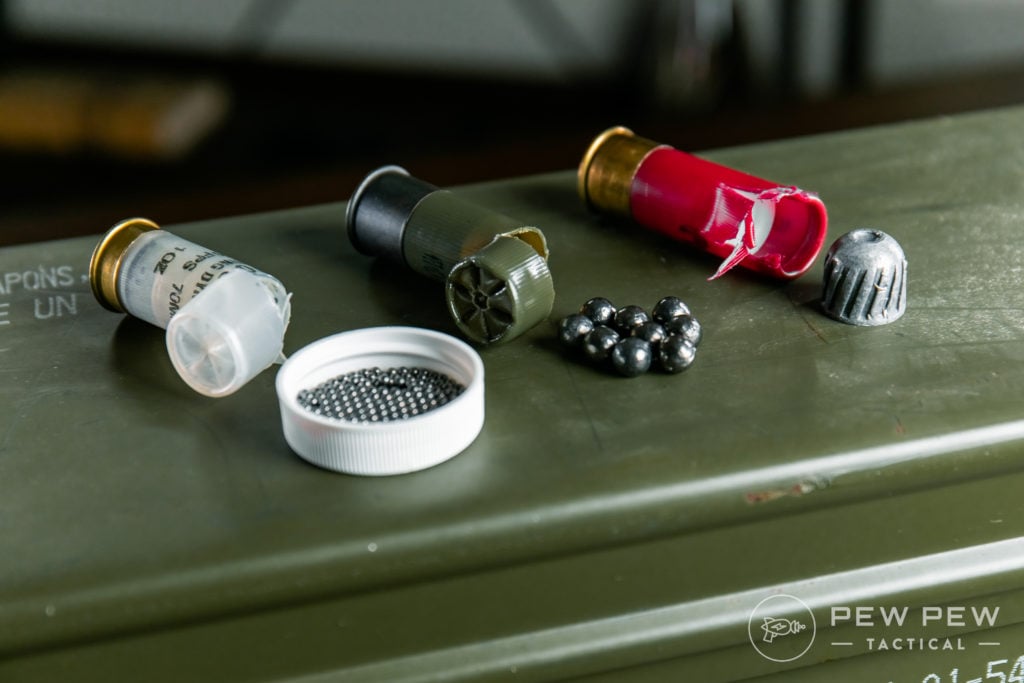
Slugs are, without a doubt, effective against the human target but are much more likely to penetrate an attacker and keep going.
Slugs work best for taking long-range shots with shotguns. Inside the home, there aren’t too many advantages.
Why Not Birdshot?
…Because it’s for birds.
Seriously though, I’m not saying birdshot isn’t lethal at point-blank range.
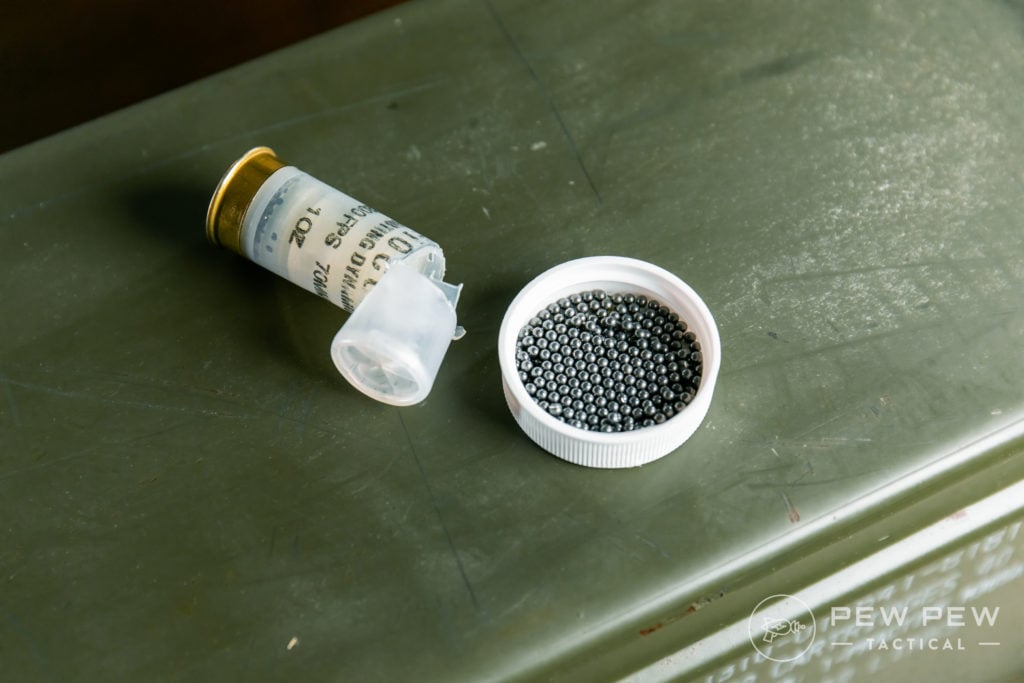
What I’m saying is, why would you want to be that close to a bad guy attacking you?
The argument for birdshot is that it won’t penetrate walls but if that’s your most serious concern, check out AR-15s chambered in 5.56 NATO.
What Exactly is Buckshot?
Buckshot is a load of large pellets that vary in size, depending on your load. The name is derived from its ability to kill a deer.
Buckshot not only varies in size, but it also varies in capacity of pellets per shell.
Prices accurate at time of writing
Prices accurate at time of writing
-
25% off all OAKLEY products - OAKLEY25
Copied! Visit Merchant
Spoiler alert, smaller pellets allow you to fit more pellets into a shell.
Here are some of the buckshot sizes you will most likely encounter.
- Number 4: .24 caliber pellets
- Number 3: .25 caliber pellets
- Number 2: .27 caliber pellets
- Number 1: .30 caliber pellets
- Single 0: .32 caliber pellets
- Double 0: .33 caliber pellets
- Triple 0: .36 caliber pellets
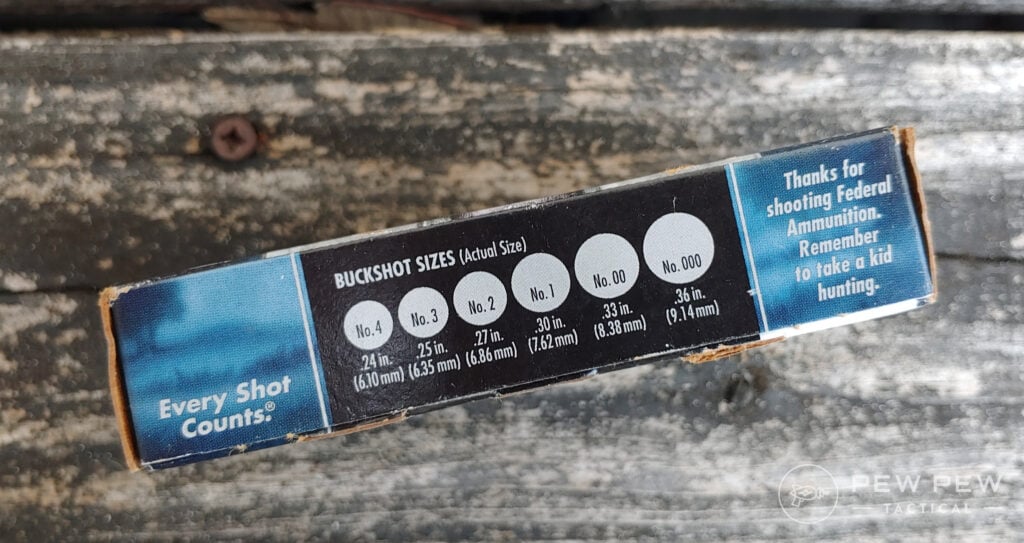
Some of these are more common than others. Some are more common in other shotgun calibers.
For example, finding No. 3 buckshot is easy…if you have a 20-gauge. If you have another caliber, you might find it difficult to find that load.
Rounds like No. 2 and Single 0 are uncommon, and you are unlikely to find a modern tactical load in these calibers.
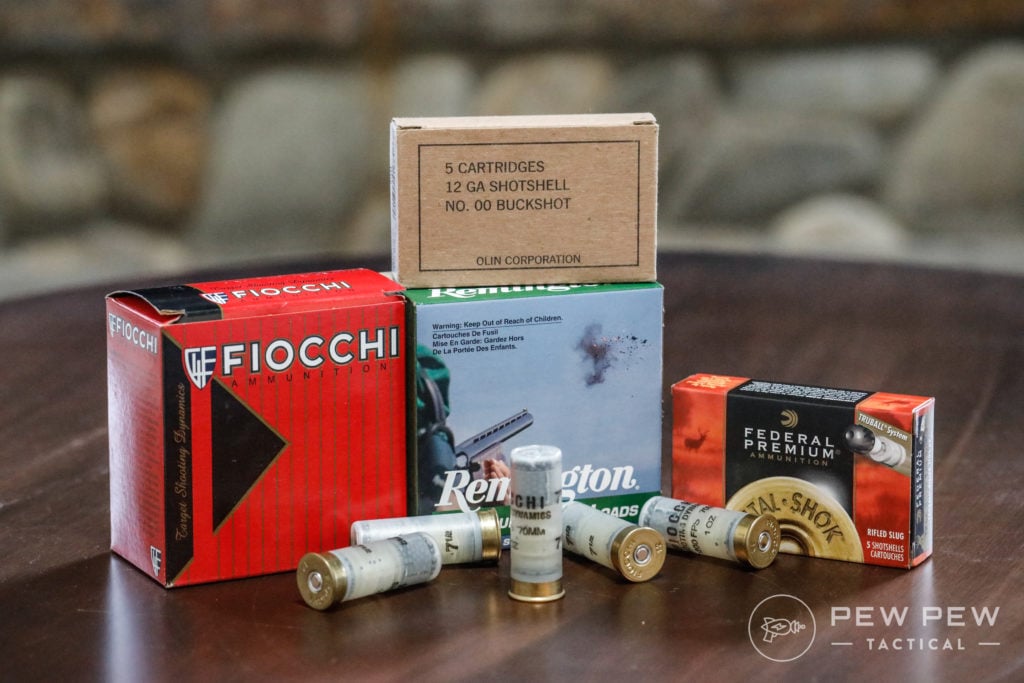
000 loads are designed for hunting and pack a lot of power, but they also come with a good bit of recoil. While they are more common, the power plus recoil makes it less than optimal.
From a defensive perspective, there are three popular loads used for self-defense and tactical use.
Those are No. 4, No. 1, and 00 buckshot.
Prices accurate at time of writing
Prices accurate at time of writing
-
25% off all OAKLEY products - OAKLEY25
Copied! Visit Merchant
It’s worth mentioning that No. 1 buckshot is the smallest buckshot that consistently performs up to FBI ballistic gel test standards, which incorporate layers of clothing. (No. 1, Single 0, Double 0, and Triple 0 all consistently meet the FBI standards.)
Defensive Choices
I stick to both 00 and No. 1 buckshot.
Both are ballistically excellent rounds and No. 1 is my all-time favorite.
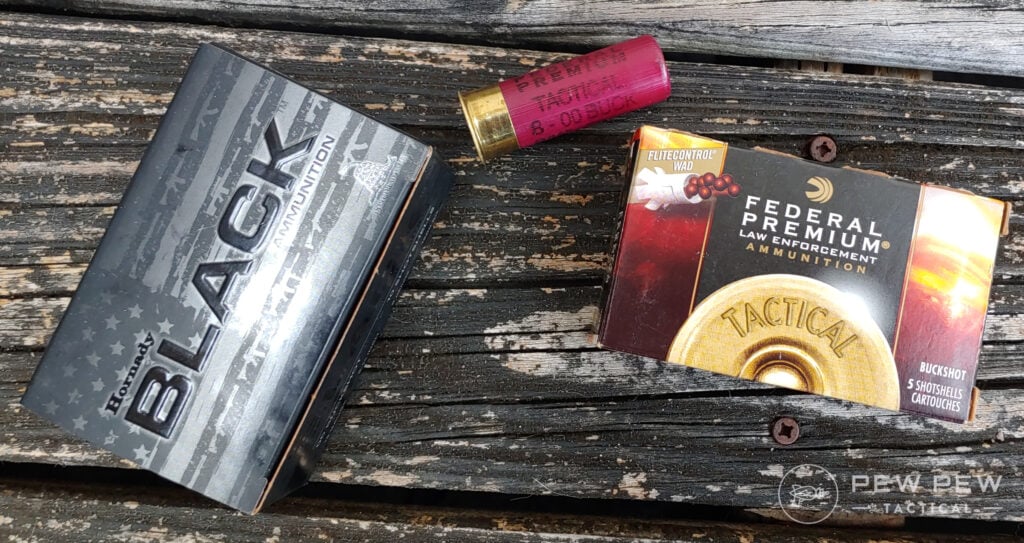
Number 1
An average load of No. 1 buckshot will hold 15 to 16 pellets. As far as load efficiency goes, the No. 1 buckshot delivers the most lead possible.
A .30 caliber shotgun pellet weighs about 40-grains, and your average Double 0 .33 caliber pellet weighs 60-grains.
That means an eight pellet load of Double 0 results in 480-grains of lead while a 15 pellet load of No. 1 delivers 600-grains of lead.
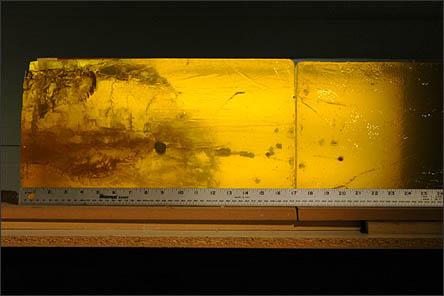
The problem with No. 1 is that it’s not very popular.
One of the best defensive shotgun loads to ever exist was the Federal FliteControl No. 1 load, but alas, it’s no longer produced. No. 1 buckshot can be tricky to find, especially in a dedicated tactical load.
In fact, in my research, I can’t find a single tactical load of No.1 that’s still produced. Sad face.
Double-aught or 00
Double 0, 00, or double-aught — however you pronounce or sell it, is the most common buckshot on the planet.
It’s used by the military, police forces, and countless home defenders. The popularity of 00 buckshot ensures there are tons of different loads produced for it.
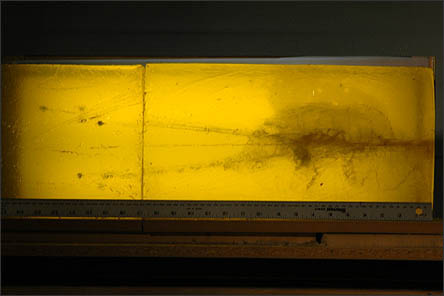
Some of the best tactical loads are produced exclusively in 00 buckshot. This variant is very popular and an outstanding home defense and tactical load.
For military and police users, better barrier penetration is certainly an attractive feature.
The versatile load delivers a bit more range than No. 1, although that’s rarely a concern with shotguns. 00 Buckshot is a good mix of power, easily tailored loads, and controllable recoil. It’s at home in both the deer gun and the tactical shotgun.
But Number 4…
This leads us to discuss No. 4 buckshot. No. 4 buckshot is often a choice for home defense for a few reasons.
First, it gives you tons of pellets. Second, it’s popular and easy to find 12-gauge loads. Lastly, there’s a belief that it doesn’t penetrate interior walls.
A standard 2.75-inch No. 4 buckshot load contains 27 pellets, and that’s a hearty load.
No. 4 is my favorite coyote load because I can hit a moving target a bit easier. It’s not my favorite home defense load, however.
Why’s that?
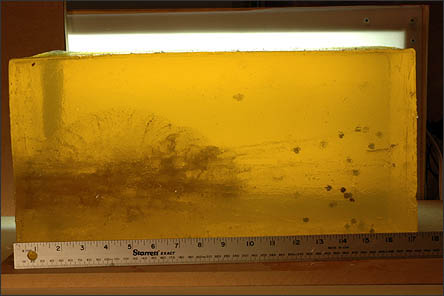
Not only does it not consistently meet FBI standards, but tests have shown that the limited interior wall penetration belief is not sound.
No. 4 loads tend to penetrate through interior walls just as deep as No. 1 buckshot. It does penetrate less than 00, though.
According to the Box o’ Truth, No. 4 can penetrate six interior walls, while 00 can penetrate 9.
Plated or Unplated
Unplated shot is simply lead balls. These are typically bare-bones, basic loads that work.
Plated buckshot types your pellets and plates them with copper or nickel.
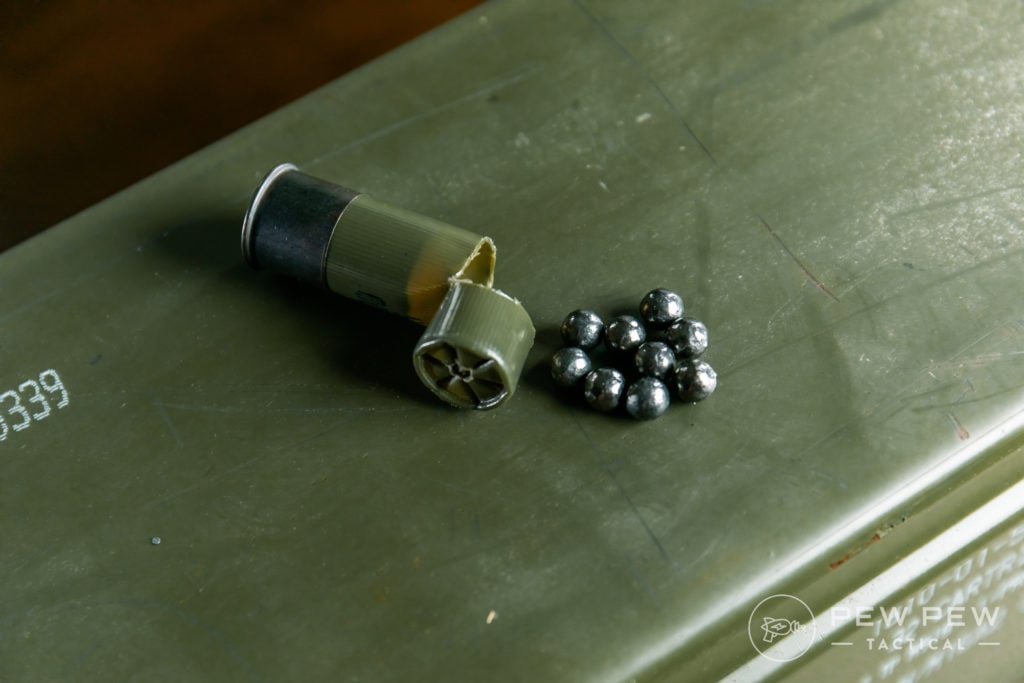
Buckshot plating is said to ensure the rounds deform less when traveling together down the barrel.
Deformed rounds often turn to flyers. Flyers are pellets that depart from the rest of the shot group and can travel wildly and dangerously.

Plating keeps buckshot patterns a little tighter and ensures more accuracy with easier shot accountability.
Buckshot plating by itself does not equate to a tight pattern. But it seems to be one ingredient in making a tight patterning shotgun load.
There are also some who say plating makes the pellets harder and gives better penetration. However, this seems to be disputed with tests that showed the hardness of the lead shot is a more important factor than plating.
Shell Length
You’ve seen me use measurements like 2.75-inches, and that’s because shotguns shells come in various sizes.
What’s important to remember is that shotgun shells are measured prior to being crimped and closed. This results in shells being shorter prior to being fired.
Here are the more common shell lengths.
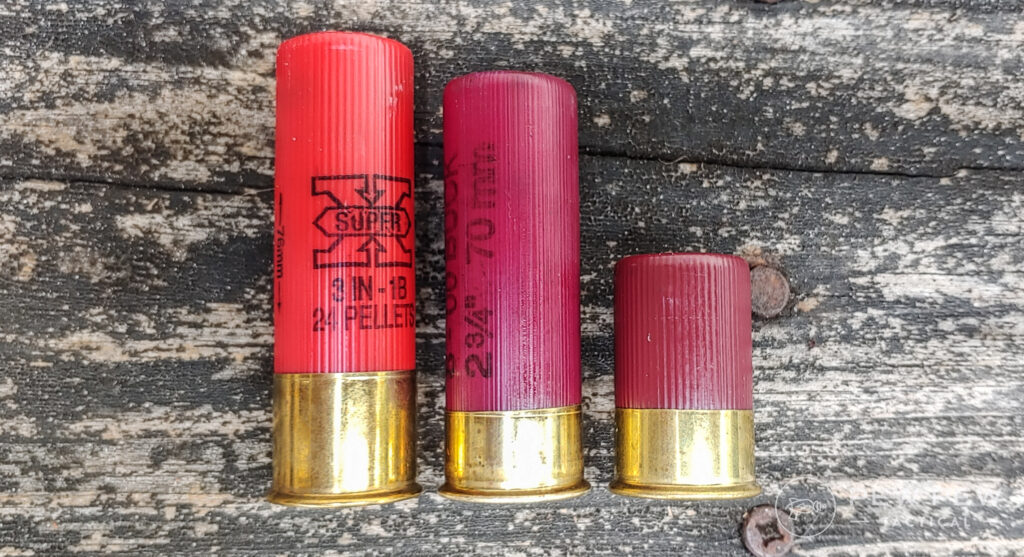
3.5-inches: These are traditionally used for hunting and are popular for bird hunting, including turkeys. They do require a 3.5-inch chamber. Guns with this chambering are typically sporting models — not tactical.
3-inches: Most modern shotguns have a 3-inch chamber. 3-inch shells are popular for hunters who want extra pellets, especially in the 00 and 000 varieties. They have some hefty recoil and tend to be avoided for home defense and tactical use.
2.75-inches: These are the most popular shells and are a good compromise of both load and recoil. 2.75-inch shells are the most common choice for home defense and tactical use. Almost all shotguns have 2.75-inch shells.
Mini Shells: These Shells come in various sizes, with the most popular being 1.75-inches. Mini Shells are a ton of fun with some usefulness for hunting small game. However, they tend to work poorly in shotguns — with the exception of Mossberg’s models equipped with the Opsol mini clip.
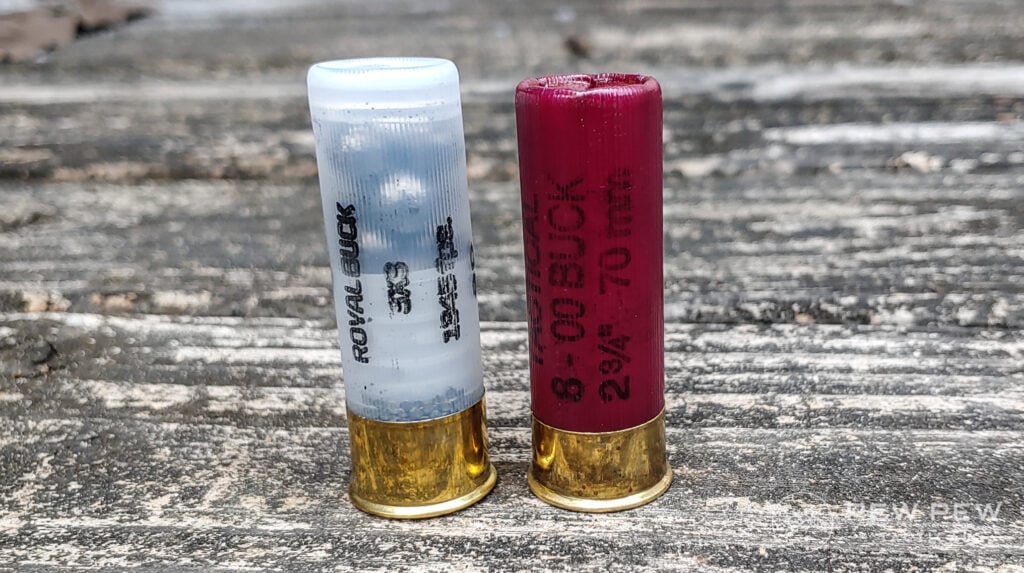
What’s Inside a Shotgun Shell?
Shot: The projectiles, duh. These small balls are what does the work once the trigger is fired. As mentioned, they vary in number and size depending on the load and the size of the shell.
Buffer Compound: Made from granulated material, this compound is designed to keep the pellets from smashing into each other. (Smashing = deformation and flyers.)
Buffer material varies, but it seems all works the same. These compounds are likely not found in cheap lead buckshot rounds.
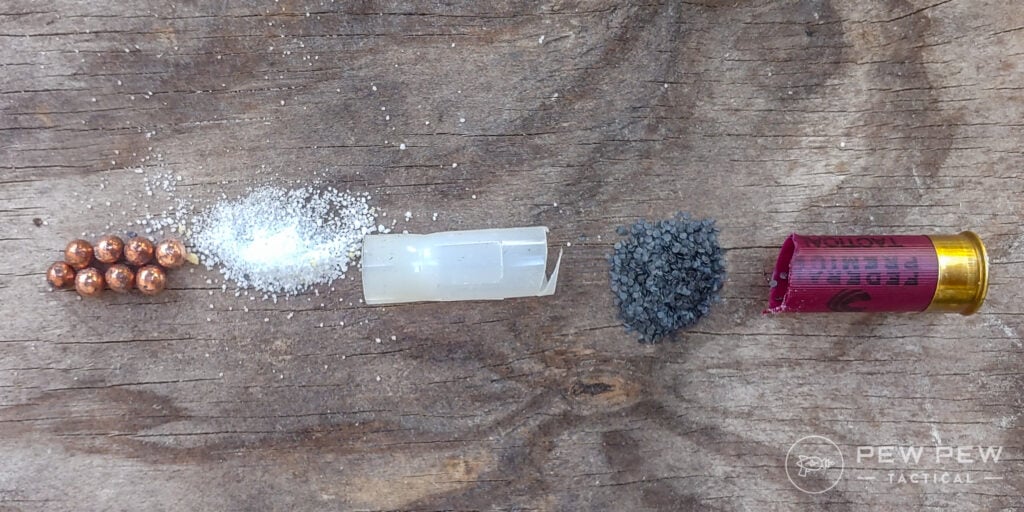
Wads/Shotcups: Used interchangeably, wads/shotcups refer to a plastic piece of the material located between the gun powder and shot. Wads were initially just a round piece of material, but they evolved with walls and became shot cups.
Modern shot cups work to tighten the shot’s pattern and prevent deformation. Shot cups like the Flitecontrol and Versatite models produce incredibly tight patterns.
Gun Powder: Duh, it’s in the shell and propels everything in front of it downrange.
The Deal With Low Recoil
When shopping for purpose-built tactical shotgun loads, you’ll see the phrase Low Recoil very, very often.
Why?
Low recoil shells are often more tactically sound.
Most low recoil 00 loads have a velocity of 1,150 to 1,200 feet-per-second. Standard buckshot loads can vary from 1,300 to 1,600 feet-per-second.
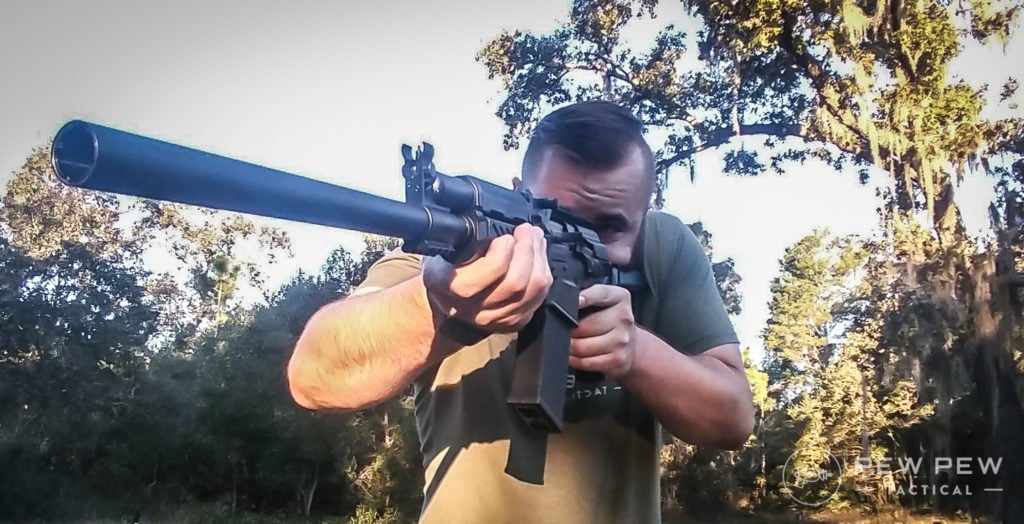
Lower recoil loads are easier to handle and softer on the shoulder. More importantly, they make follow up shots quicker and easier.
At the same time, the reduction in recoil does not hamper a round’s ability to stop a threat.
I do suggest low recoil loads for self-defense with one big caveat.
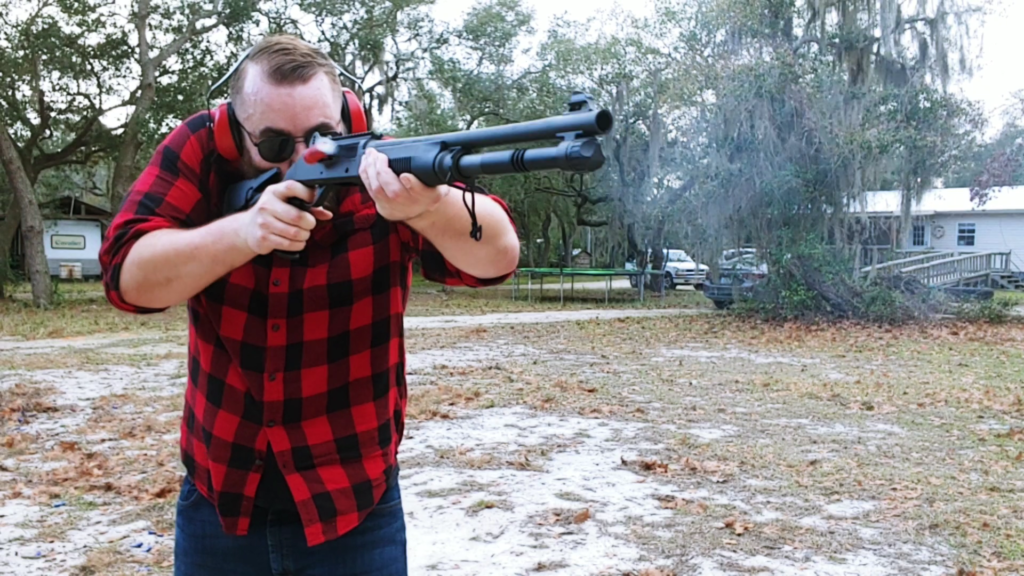
If you are using a semi-auto shotgun, you need to ensure those rounds will cycle in your weapon without issue. That means load ‘em up, hit the range, and ensure they cycle.
Shotguns like the Benelli M4 and Mossberg 930 SPX seem to have no issues with low recoil loads, but I can’t speak for every shotgun. Test it out, and if it doesn’t run, choose a different load.
In pump-action shotguns, they are absolutely golden.

The Most Important Step: Patterning
Let’s say you’ve chosen a round that fulfills your home defense needs. It has all the features you want. Great.
The next step to tackle is patterning.
Patterning means shooting your gun at a target and observing the pattern your buckshot creates.
Buckshot can pattern different from gun to gun, and it’s important you pattern your gun and study its patterns. I recommend patterning several different loads and see what works best for you and your shotgun.
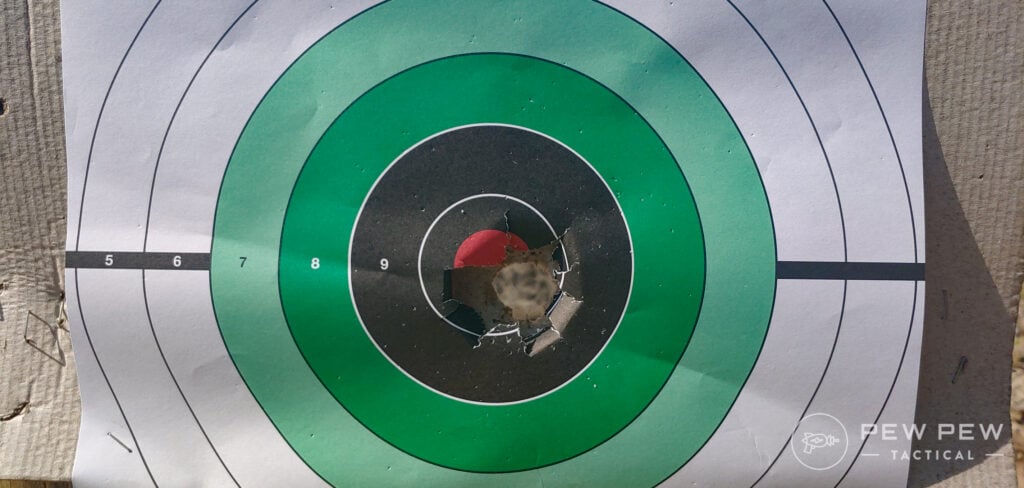
Patterning is actually quite easy and, to me, it’s fun.
When patterning for a home defense shotgun, you should measure the farthest possible shot you may have to take inside your home. That will be your furthest most patterning range. I know my furthest shot is 15-yards inside my home.
When patterning ammunition, I use a different target for each shot. I pattern my shotgun at 5-, 7-, 10-, and 15-yards. These replicate most of the shots inside my house.
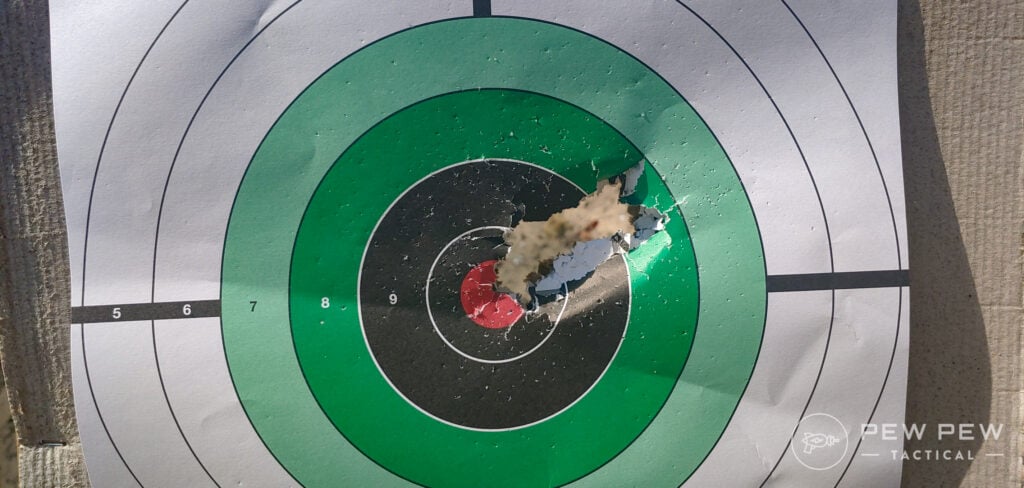
After firing a shot, I measure the pattern at that range and notate it. I typically fire multiple shots at each range and ensure each is notated.
What exactly am I looking for?
First, I’m looking for a nice, tight pattern. A tight pattern ensures you have the accountability of every pellet you’ve fired. A tight pattern also delivers a lot of damage to one area.
Ultimately for inside the home, I want a pattern to be tighter than 10-inches at the max range.
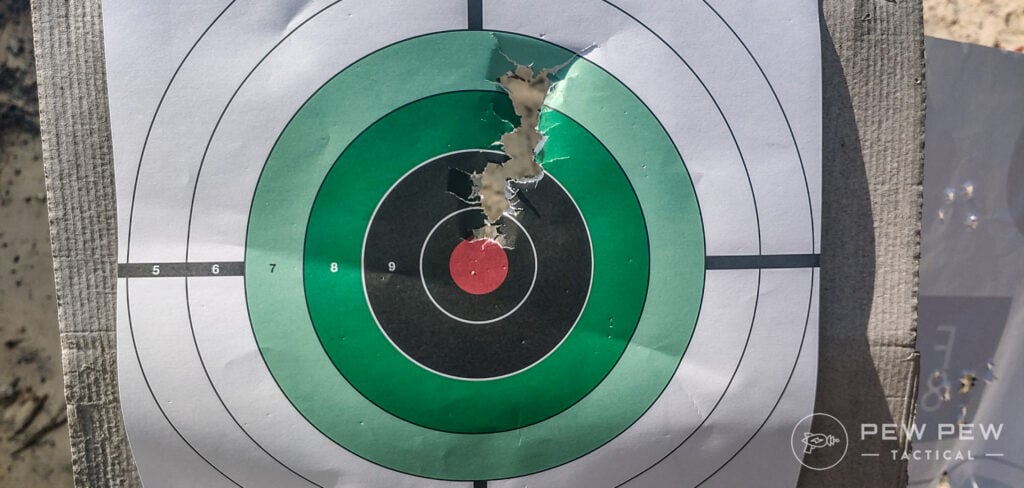
Second, I am looking for consistency. Does the pattern remain consistent for multiple shots? If so, it is predictable, and I can plan for it.
If the pattern is not consistent, then I disqualify it.
Third, I’m looking for flyers. A flyer is an errant pellet that flys sperate from most of the shot. If a load has repeated flyers, then the load is disqualified.
Some Random Buckshot Wisdom
Before I leave you, I have three pieces of advice on buckshot.
8 is better than 9
8 pellet 00 buckshot is better than 9 pellet. The reason — flyers. 9 pellet buckshot has a greater tendency to have more flyers than 8 pellet loads. The way the pellets are orientated to fit one extra round in there often causes a flyer.
Chokes Aren’t Always Great
A lot of modern tactical loads are designed for cylinder bore guns. When the loads meet a choke, they tend to pattern wider, or even worse, unpredictably. Check your choke if you are having issues patterning your buckshot.
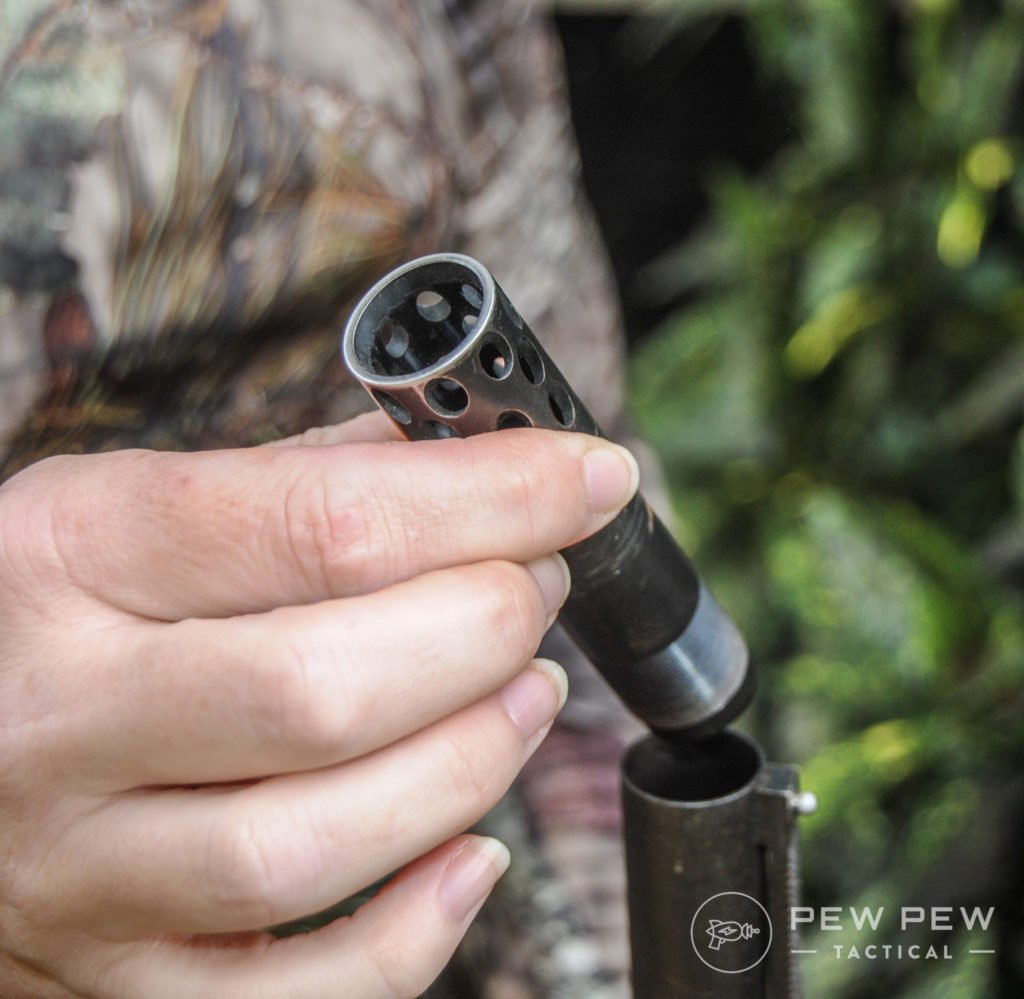
Shell Lengths Are Weird
As we explained, shells are measured prior to crimping. This can create shells that are longer than others when crimped. The result? A capacity situation in a magazine tube if the shells are longer than most.
For example, I have some cheap Rio buckshot that only allows me to fit four rounds in a 5-round magazine tube. If you run into any issues with capacity, check the load’s crimped shell length.

My Favorite Buckshot Loads
If you just want a simple answer on which buckshot to choose, then I have some suggestions for you. The following are best when paired with a defensive shotgun.
1. Federal FliteControl 00 8 Pellet: Best Overall
Federal FliteControl is my favorite buckshot load. It’s affordable, easy to find, and very effective. The reduced recoil tactical loads are wonderful.
The round cycles in my semi-auto shotguns, and keeps the tightest pattern I’ve ever seen. At 15-yards, the pellets are in a group the size of my hand. This is thanks to the FliteControl Shot cup.
It’s an outstanding load! (Psst, I use the 8 pellet load to reduce the chance of flyers.)
Prices accurate at time of writing
Prices accurate at time of writing
-
25% off all OAKLEY products - OAKLEY25
Copied! Visit Merchant
2. Hornady Black/Hornady Critical Defense: Best Defense
The slash between Hornady Black and Hornady Critical Defense exists because the rounds are identical. I have no idea why both exist, but either one is a great choice for self-defense.
These loads are particularly great for semi-auto guns because they are full-powered loads.
Prices accurate at time of writing
Prices accurate at time of writing
-
25% off all OAKLEY products - OAKLEY25
Copied! Visit Merchant
They launch projectiles at 1,600 FPS and will make any shotgun cycle reliably.
Opting for a Versatite shot cup that is identical to Federal’s FliteControl, I’d hazard to guess both companies buy the shot cups from the same company.
Prices accurate at time of writing
Prices accurate at time of writing
-
25% off all OAKLEY products - OAKLEY25
Copied! Visit Merchant
3. Remington 8 Pellet Managed Recoil: Most Affordable
A simple and affordable buckshot solution is the Remington Managed Recoil buckshot. These 8 pellet loads are often marked “law enforcement” but are very reliable, easy to handle, and pattern well for a budget-based ammo.
They don’t feature a fancy shot cup, but inside the home, they are perfectly suitable. They pattern tight enough and will deliver you an effective round you can affordable train with.
Prices accurate at time of writing
Prices accurate at time of writing
-
25% off all OAKLEY products - OAKLEY25
Copied! Visit Merchant
4. Winchester Super-X Buffered #1 Buckshot: Best #1 Buckshot
No. 1 buckshot is tough to find sometimes, but a common load I see is the Super-X brand. This buckshot blasts 16 pellets at a respectable 1,250 FPS. It’s not quite reduced recoil, but it’s still very controllable.
This stuff cycles well in semi-autos in my experience, including some cheaper models. It delivers a lot of lead and will most certainly stop a target.
It’s perfect if you are a tactical hipster who really wants the most efficient lead delivery system possible.
Prices accurate at time of writing
Prices accurate at time of writing
-
25% off all OAKLEY products - OAKLEY25
Copied! Visit Merchant
Conclusion
Choosing the right loads for your shotgun will no doubt make your experience better. From understanding buckshot to selecting the best ammo, we’ve even gone so far as to share our favorite rounds. (Federal Flitecontrol, Hornady Critical Defense, Remington Managed Recoil, and Winchester Super-X.)
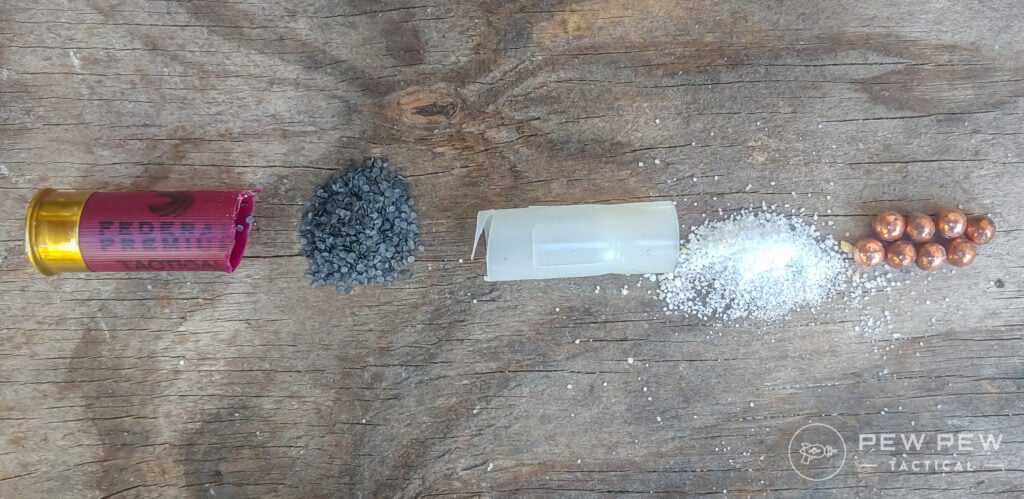
Unfortunately, the buck stops here. Pun intended. I hope you guys learned a thing or two about buckshot that will save you some cash in the end.
If you have some buckshot tips and tricks, leave your buckshot wisdom below in the comments. Don’t forget to also check out our take on the Best Home-Defense Tactical Shotguns.

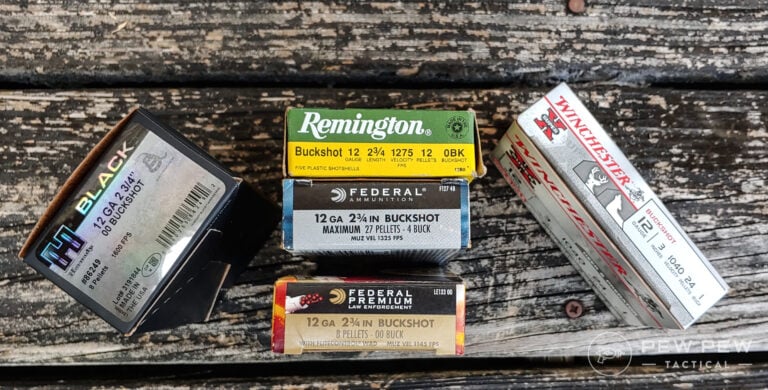

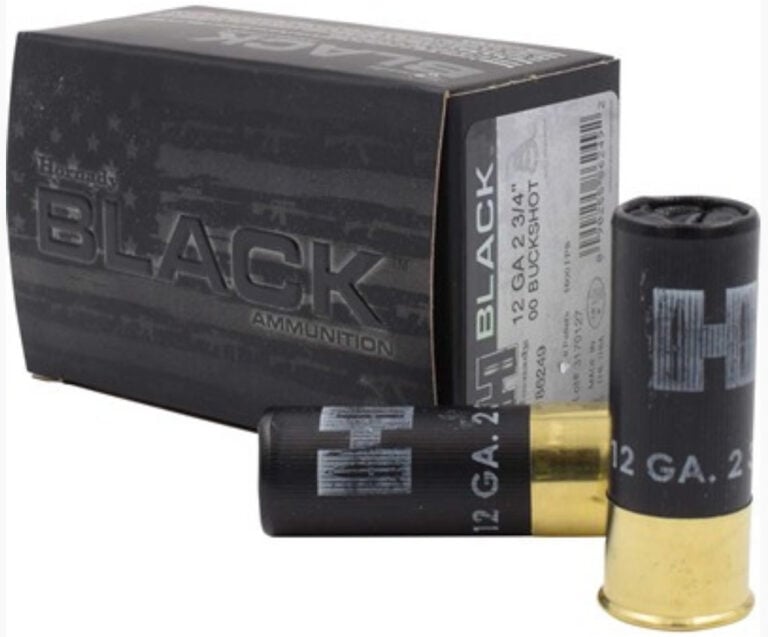


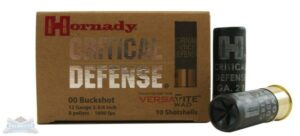


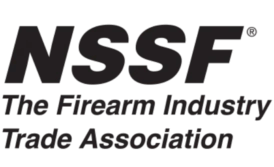











13 Leave a Reply
Beginner here. Need a lot of loading/unloading, dry-fire practice. Please recommend a 2.75 inch dummy practice round that will actually fit 7 + 1 in a Beretta 1301, 12 gage, Tac, Mod 2.
Thanks, Jay
Thank you for all you do Sir!
I really appreciate the info on shot gun ammo selection for home defense!
Have a awesome and safe New Year!
P.S. I've been a follower of you from the early "truth about guns" site.
Really enjoy your articles!
Keep up the great work!!
Well, I just purchased an M4. I have an 870 and a CZ over and under (Redhead), but wanted more of a tactical gun. I have not really shot one for a while allthough I am a retired LEO Firearms instuctor.
THANK You brother! I am 68, haven't had a shotgun since my youth, and even then, didn't know anything about it other than pulling the trigger. YoU aRe APPRECIATED
great stuff . i was a total idiot regarding ammo . after reading im almost a "genius." LOL . thank you for sharing your wisdom
Really informative for beginners like me. Clearly written, excellent explanations. Thanks for taking the time to share your expertise.
Having read many, many articles on this very subject for many years I have to say this is the most common sense informative, accurate advice I have seen. Thanks for not acting like a guru, even if you are one. Very refreshing. Thank you.
This article assumes everybody must use a 12 gauge. What about 20? It works too.
While its not possible for #1 buck to fix properly in a 20 gauge shell, #2 which is slightly smaller, is made by Federal and should be effective enough to rely on. Thoughts?
Excellent article. Glad to see someone give the credit to #1 Buck that it deserves.
Understandably not the best home defense weapon, and I generally have this covered with one of my other guns, but is there any reason your standard, high-quality, Italian over/under 12ga couldn't shoot buckshot? Mine doesn't have replaceable chokes, but the barrels are choked.
I bought a new TS12 for home defense and for fun. Thanks for this article. I really didn't know much about 00buck, other than it's the preferred HD ammo. With such limited knowledge I simply have bought the more affordable full powered loads for my KSG that I've had for a while now. The TS12 will assume the HD role. Now I have a better understanding about the suitability of ammo for the HD role thanks to you.
From the short bbl police-type gun, what's the farthest distance to target for 00 buck?
Again, as the author stated, every gun is different, and therefore you must pattern various loads to determine the best for “your” gun. For pump guns, like the Tac-14 and Shockwave, using the reduced recoil shells is perhaps more important for follow up shots, than with a full-sized shotgun. For the Tac-13, just make sure they cycle flawlessly. I have found Fiochi Low Recoil 00 Buck to be the best choice for “my” guns, both pump and semi. They consistently pattern within 11-inches at 20-feet (default patterning distance) in my Tac-13. And their length is a true 2.75-inches, so the magazine can be filled to capacity. All the best!